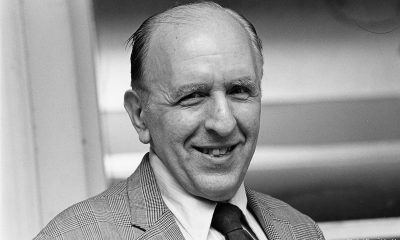Books
‘Secret City’ reveals long hidden stories of gay purges in federal gov’t
Gay journalist uncovers reports of closeted officials serving under 10 presidents
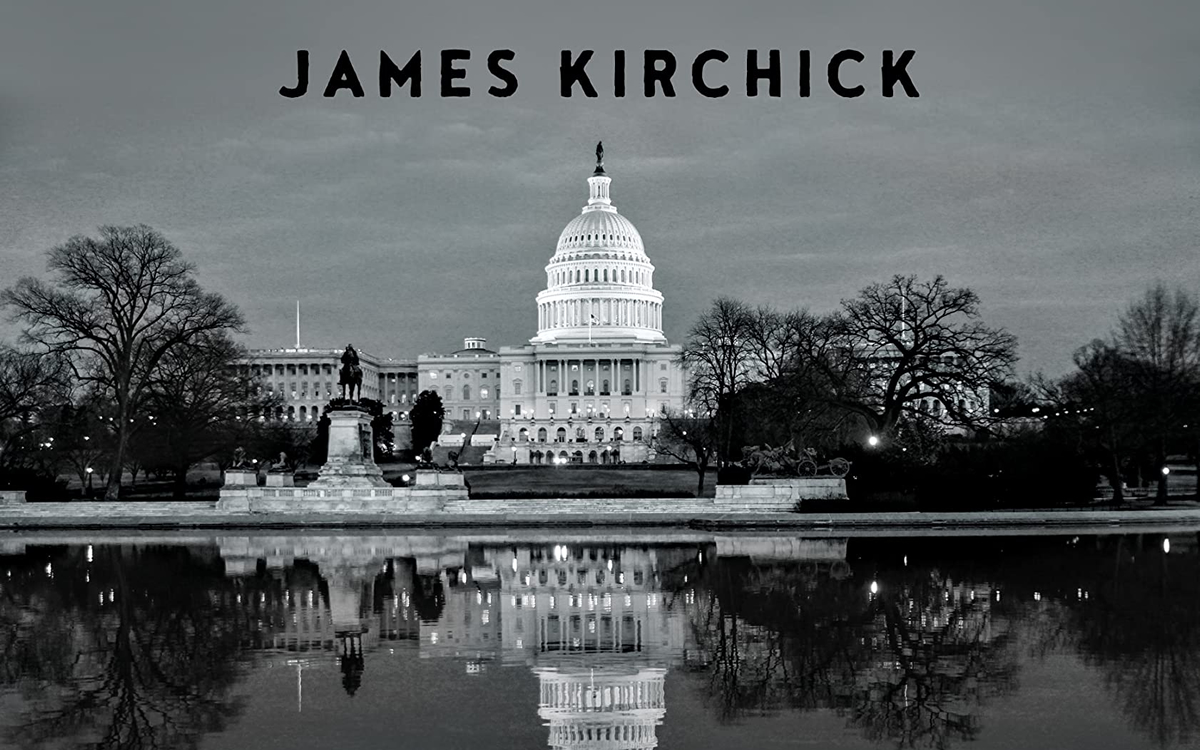
A new book released this week called “Secret City: The Hidden History of Gay Washington” is drawing the attention of LGBTQ rights activists and longtime Washington insiders alike for its never-before-told stories about dozens of closeted mostly gay men and at least one lesbian who worked for 10 U.S. presidents beginning with Franklin Roosevelt through George H.W. Bush.
The book ends with the role LGBTQ people played under the 11th president it covers — Bill Clinton — by pointing out that Clinton was the first president to appoint openly gay or lesbian people to high-level administration positions.
The book’s author, gay journalist James Kirchick, says he chose to end the book with his coverage of Clinton because Clinton, for the most part, ended the restrictions against gays and lesbians serving in sensitive civilian government jobs by lifting the longstanding ban on approving government security clearances for gays.
In an interview with the Blade, Kirchick said he began his research for the book over a decade ago in his role as a Washington reporter with a longstanding interest in the Cold War and the U.S. government’s struggle to address the perceived threat of communism promoted by the then Soviet Union at the conclusion of World War II.
He said that prior to that time homosexuality was perceived as a “sin, a very bad sin,” but not a threat to the safety and security of the country. But that changed at the start of World War II when the country developed what Kirchick calls a bureaucracy for managing military and governmental secrets needed to protect the country from outside threats.
“From the Second World War until the end of the Cold War that followed, the specter of homosexuality haunted Washington,” Kirchick writes in the introduction to his book. “Nothing posed a more potent threat to a political career or exerted a more fearsome grip on the nation’s collective psyche, than the love expressed between people of the same sex,” he writes.
Kirchick notes the development widely observed by historians and LGBTQ activists that homosexuals in important government positions were perceived to be a threat to national security because societal bias and official government restrictions forced them to hide their sexual orientation and made them susceptible to blackmail by foreign government agents seeking to uncover U.S. military secrets.
In his 2006 book, “The Lavender Scare,” gay historian David K. Johnson reports how large numbers of gays were denied security clearances and forced out of their jobs because of fears of security breaches that Johnson said were never shown to have happened.
Kirchick, who said he was inspired by Johnson’s book, expands on “Lavender Scare’s” reporting by providing detailed stories of dozens of individual gay people or people incorrectly thought to be homosexual who became ensnared in investigations into their alleged sexual orientation while working for at least 10 U.S. presidents.
The presidents the book covers include Franklin Roosevelt, Harry Truman, Dwight Eisenhower, John F. Kennedy, Lyndon Johnson, Richard Nixon, Gerald Ford, Jimmy Carter, Ronald Reagan, George H.W. Bush, and Bill Clinton.
A statement announcing the release of the book says Kirchick obtained thousands of pages of declassified documents, interviewed more than 100 people, and viewed documents from presidential libraries and archives across the country to obtain the information he needed for “Secret City.”
Among those forced out of their job was Sumner Wells, a high-level State Department official and diplomatic adviser under Franklin Roosevelt. In “Secret City,” Kirchick tells how despite Wells’ reputation as an invaluable adviser to Roosevelt, the president made it clear Wells could not remain in the administration after word got out that he had solicited one or more young men for sex who worked as porters on passenger trains that Wells had taken to travel to different parts of the country.
Not all of the book’s stories involve government officials. In one story Kirchick tells about Oliver Sipple, a former U.S. Marine who saved the life of President Gerald Ford by deflecting the gun of a woman who attempted to shoot Ford as he emerged from an event in San Francisco. The widely publicized incident prompted some gay activists to publicly disclose that Sipple was gay and should be hailed as a hero.
The book reports that Sipple was not out publicly and became emotionally distraught after being outed. His parents reacted in a hostile way after learning from press reports that their son was a homosexual and told him he was no longer welcome to visit his parents, according to the book.
A far more positive story emerged during the administration of President Jimmy Carter. The book reports on a development reported by the Washington Blade and other media outlets at the time it became known in 1979 when Jamie Shoemaker, a gay man who worked as a linguist with the U.S. National Security Agency, or NSA, had his security clearance revoked and was told he would be fired after officials at the highly secretive agency discovered he was gay.
Shoemaker contested the effort to dismiss him and retained D.C. gay rights pioneer Frank Kameny, who was a recognized expert in helping gays contest efforts to revoke government security clearances, to represent him. In a development that surprised many political observers, former Admiral Bobby Ray Inman, who Carter had appointed as director of the NSA, determined that Shoemaker was not a threat to the agency’s secrets and could retain his security clearance and his job.
Inman made that determination after Kameny and Shoemaker made it clear that Shoemaker was an out gay man who had no problem disclosing his sexual orientation at work if doing so did not jeopardize his job. Shoemaker became the first known gay person to be allowed to retain a high-level security clearance at a U.S. government intelligence agency such as the NSA and possibly at any government agency or department.
Shoemaker, who has since retired, told the Blade that in recent years, an LGBTQ employee group at the NSA has invited him to return to the agency’s headquarters as a guest speaker for the group’s LGBTQ Pride event with the full approval of NSA officials. The welcoming of Shoemaker at the NSA in recent years is viewed by activists as a development illustrating the dramatic changes that have taken place in support of LGBTQ workers at security agencies like the NSA, the CIA, and the FBI.
But Kirchick includes in his book a slightly less positive story about one of Carter’s White House aides, Midge Costanza, who Kirchick says was known by political insiders to be a lesbian who never publicly acknowledged her sexual orientation. Costanza became widely known and praised by LGBTQ activists when she invited LGBTQ leaders from across the country to the White Houses to provide her and the Carter administration with a briefing on LGBTQ issues. The meeting became the first known time that gay and lesbian rights advocates had been invited to the White House for an official meeting.
Carter himself was out of town at the time of the meeting for a pre scheduled visit to the presidential retreat at Camp David, White House officials said at the time.
Kirchick reports that in the following year or two, during Carter’s first and only term in office as president, higher up White House officials who Kirchick says were known as the “Georgia Mafia” because of their association with Carter at the time he was Georgia governor, disparaged Costanza over claims that she was pushing positions too far to the left. Among other things, the White House officials moved Costanza’s office from a prestigious location near the Oval Office to an out of the way basement space. Costanza a short time later resigned and returned to Rochester, New York, where she began her political career.
Despite what Kirchick said was a setback of sorts for the LGBTQ cause by the outcome of Costanza’s tenure at the White House, he writes in his book that the situation soon improved for gay people working in the federal government in Washington.
“The story of the secret city is also the story of a nation overcoming one of its deepest fears,” Kirchick writes in the concluding chapter of “Secret City.”
“Only when gay people started living their lives openly did the hysteria start to become plain for what its was,” he writes. “Across the broad sweep of American history, no minority group has witnessed a more rapid transformation in its status, in the eyes of their fellow citizens, than gay people in the second half of the twentieth century,” Kirchick concludes.
The Blade may receive commissions from qualifying purchases made via this post.
Books
New book offers observations on race, beauty, love
‘How to Live Free in a Dangerous World’ is a journey of discovery
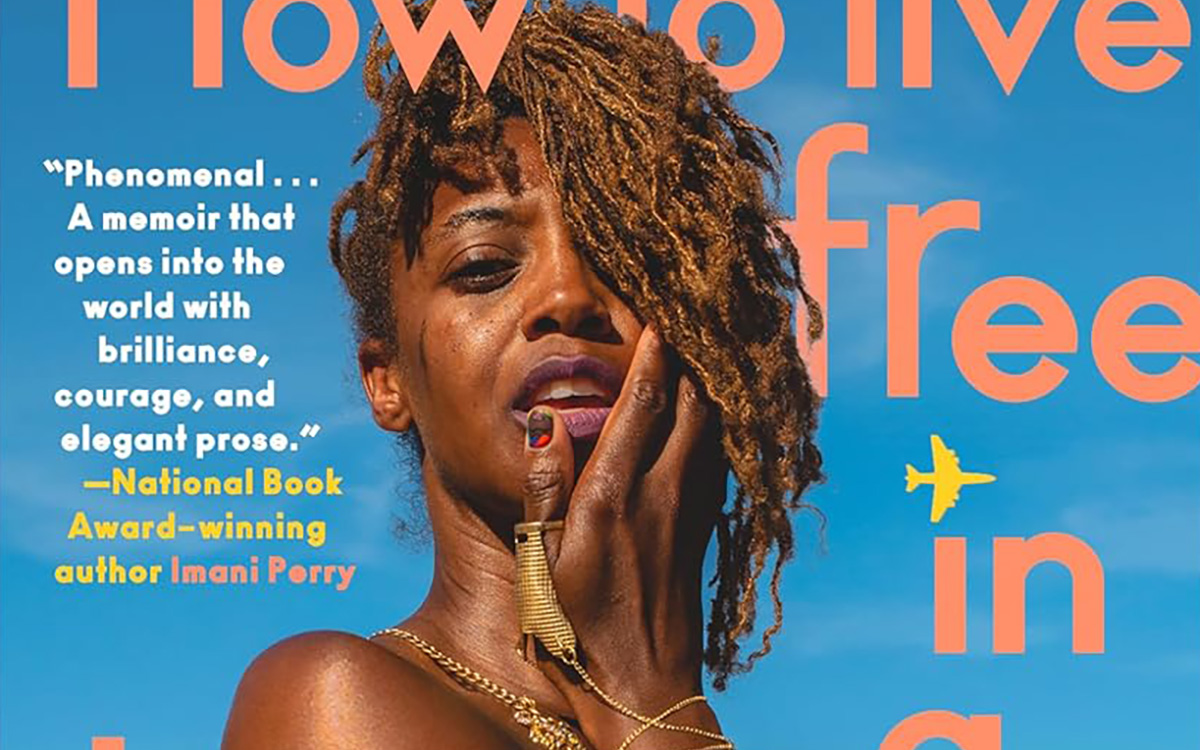
‘How to Live Free in a Dangerous World: A Decolonial Memoir’
By Shayla Lawson
c.2024, Tiny Reparations Books
$29/320 pages
Do you really need three pairs of shoes?
The answer is probably yes: you can’t dance in hikers, you can’t shop in stilettos, you can’t hike in clogs. So what else do you overpack on this long-awaited trip? Extra shorts, extra tees, you can’t have enough things to wear. And in the new book “How to Live Free in a Dangerous World” by Shayla Lawson, you’ll need to bring your curiosity.

Minneapolis has always been one of their favorite cities, perhaps because Shayla Lawson was at one of Prince’s first concerts. They weren’t born yet; they were there in their mother’s womb and it was the first of many concerts.
In all their travels, Lawson has noticed that “being a Black American” has its benefits. People in other countries seem to hold Black Americans in higher esteem than do people in America. Still, there’s racism – for instance, their husband’s family celebrates Christmas in blackface.
Yes, Lawson was married to a Dutch man they met in Harlem. “Not Haarlem,” Lawson is quick to point out, and after the wedding, they became a housewife, learned the language of their husband, and fell in love with his grandmother. Alas, he cheated on them and the marriage didn’t last. He gave them a dog, which loved them more than the man ever did.
They’ve been to Spain, and saw a tagline in which a dark-skinned Earth Mother was created. Said Lawson, “I find it ironic, to be ordained a deity when it’s been a … journey to be treated like a person.”
They’ve fallen in love with “middle-American drag: it’s the glitteriest because our mothers are the prettiest.” They changed their pronouns after a struggle “to define my identity,” pointing out that in many languages, pronouns are “genderless.” They looked upon Frida Kahlo in Mexico, and thought about their own disability. And they wish you a good trip, wherever you’re going.
“No matter where you are,” says Lawson, “may you always be certain who you are. And when you are, get everything you deserve.”
Crack open the front cover of “How to Live Free in a Dangerous World” and you might wonder what the heck you just got yourself into. The first chapter is artsy, painted with watercolors, and difficult to peg. Stick around, though. It gets better.
Past that opening, author Shayna Lawson takes readers on a not-so-little trip, both world-wide and with observant eyes – although it seems, at times, that the former is secondary to that which Lawson sees. Readers won’t mind that so much; the observations on race, beauty, love, the attitudes of others toward America, and finding one’s best life are really what takes the wheel in this memoir anyhow. Reading this book, therefore, is not so much a vacation as it is a journey of discovery and joy.
Just be willing to keep reading, that’s all you need to know to get the most out of this book. Stick around and “How to Live Free in a Dangerous World” is what to pack.
The Blade may receive commissions from qualifying purchases made via this post.
Books
Story of paralysis and survival features queer characters
‘Unswerving: A Novel’ opens your eyes and makes you think
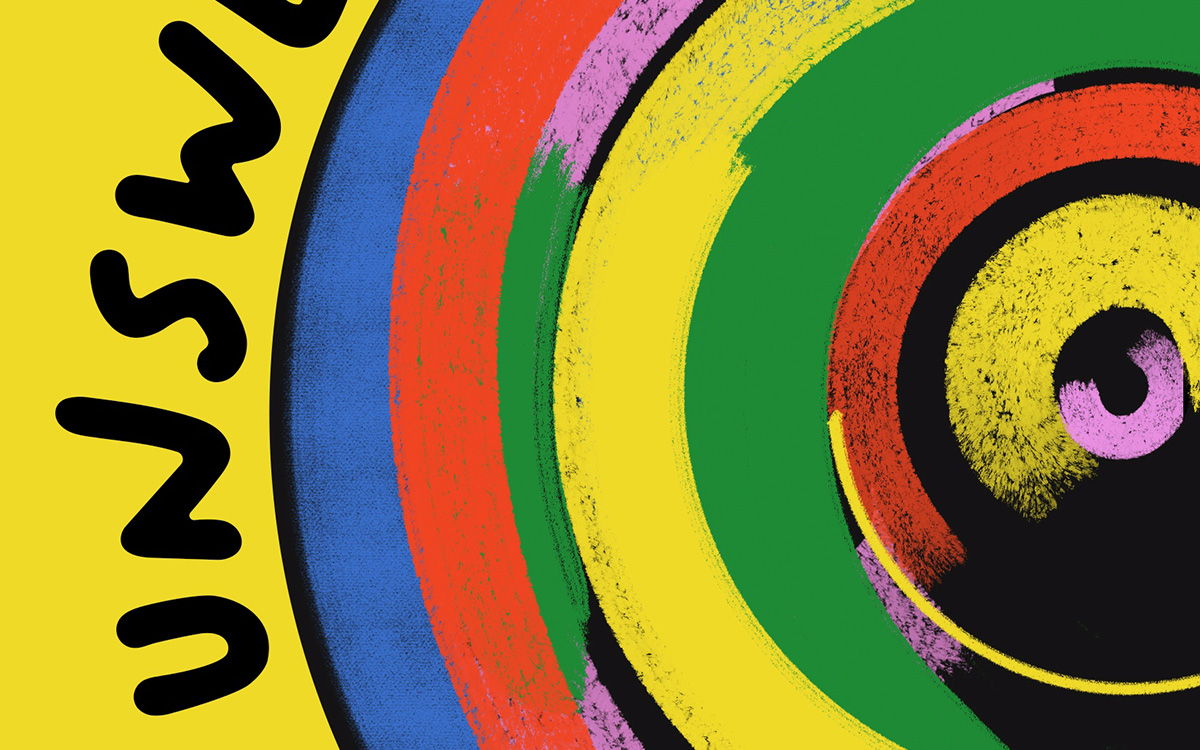
‘Unswerving: A Novel’
By Barbara Ridley
c.2024, University of Wisconsin Press
$19.95 / 227 pages
It happened in a heartbeat.
A split-second, a half a breath, that’s all it took. It was so quick, so sharp-edged that you can almost draw a line between before and after, between then and now. Will anything ever be the same again? Perhaps, but maybe not. As in the new book “Unswerving” by Barbara Ridley, things change, and so might you.

She could remember lines, hypnotizing yellow ones spaced on a road, and her partner, Les, asleep in the seat beside her. It was all so hazy. Everything Tave Greenwich could recall before she woke up in a hospital bed felt like a dream.
It was as though she’d lost a month of her life.
“Life,” if you even wanted to call it that, which she didn’t. Tave’s hands resembled claws bent at the wrist. Before the accident, she was a talented softball catcher but now she could barely get her arms to raise above her shoulders. She could hear her stomach gurgle, but she couldn’t feel it. Paralyzed from the chest down, Tave had to have help with even the most basic care.
She was told that she could learn some skills again, if she worked hard. She was told that she’d leave rehab some day soon. What nobody told her was how Les, Leslie, her partner, girlfriend, love, was doing after the accident.
Physical therapist Beth Farringdon was reminded time and again not to get over-involved with her patients, but she saw something in Tave that she couldn’t ignore. Beth was on the board of directors of a group that sponsored sporting events for disabled athletes; she knew people who could serve as role models for Tave, and she knew that all this could ease Tave’s adjustment into her new life. It was probably not entirely in her job description, but Beth couldn’t stop thinking of ways to help Tave who, at 23, was practically a baby.
She could, for instance, take Tave on outings or help find Les – even though it made Beth’s own girlfriend, Katy, jealous.
So, here’s a little something to know before you start reading “Unswerving”: author Barbara Ridley is a former nurse-practitioner who used to care for patients with spinal cord injuries. That should give readers a comfortable sense of satisfaction, knowing that her experiences give this novel an authenticity that feels right and rings true, no faking.
But that’s not the only appeal of this book: while there are a few minor things that might have readers shaking their heads (HIPAA, anyone?), Ridley’s characters are mostly lifelike and mostly likable. Even the nasties are well done and the mysterious character that’s there-not-there boosts the appeal. Put everyone together, twist a little bit to the left, give them some plotlines that can’t ruined by early guessing, and you’ve got a quick-read novel that you can enjoy and feel good about sharing.
And share you will because this is a book that may also open a few eyes and make readers think. Start “Unswerving” and you’ll (heart) it.
The Blade may receive commissions from qualifying purchases made via this post.
Books
Examining importance of queer places in history of arts and culture
‘Nothing Ever Just Disappears’ shines with grace and lyrical prose
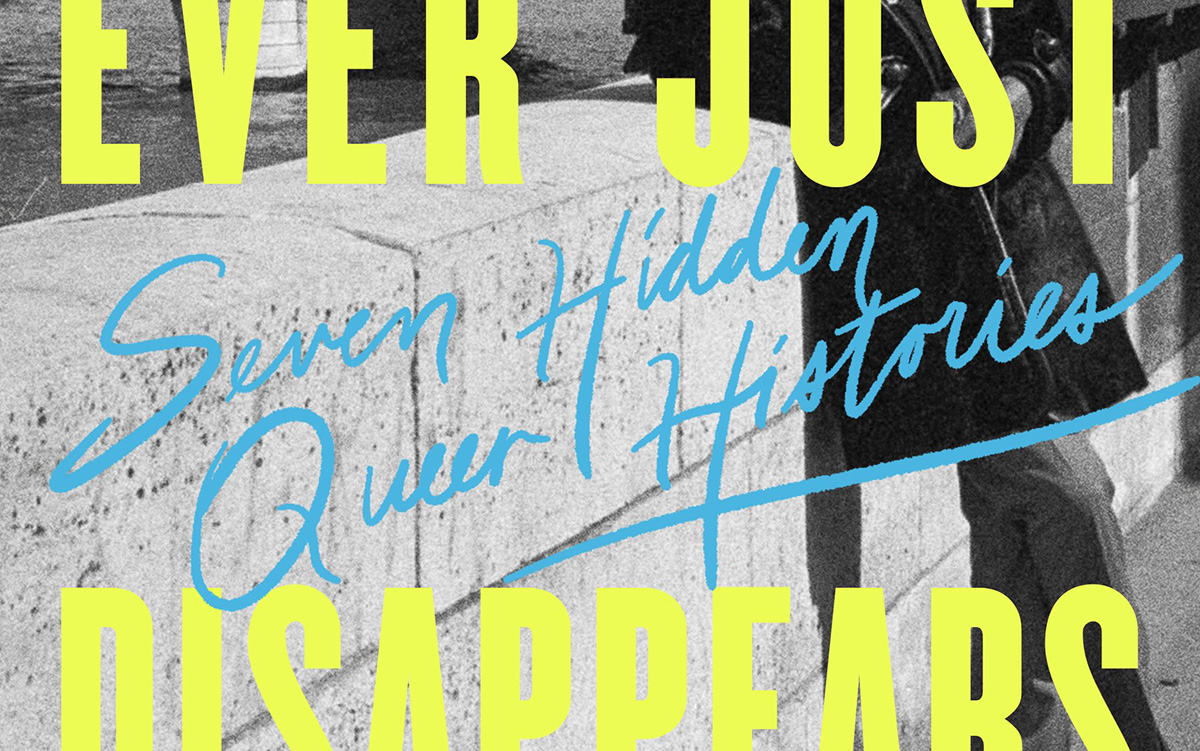
‘Nothing Ever Just Disappears: Seven Hidden Queer Histories’
By Diarmuid Hester
c.2024, Pegasus Books
$29.95/358 pages
Go to your spot.
Where that is comes to mind immediately: a palatial home with soaring windows, or a humble cabin in a glen, a ramshackle treehouse, a window seat, a coffeehouse table, or just a bed with a special blanket. It’s the place where your mind unspools and creativity surges, where you relax, process, and think. It’s the spot where, as in the new book “Nothing Ever Just Disappears” by Diarmuid Hester, you belong.

Clinging “to a spit of land on the south-east coast of England” is Prospect Cottage, where artist and filmmaker Derek Jarman lived until he died of AIDS in 1994. It’s a simple four-room place, but it was important to him. Not long ago, Hester visited Prospect Cottage to “examine the importance of queer places in the history of arts and culture.”
So many “queer spaces” are disappearing. Still, we can talk about those that aren’t.
In his classic book, “Maurice,” writer E.M. Forster imagined the lives of two men who loved one another but could never be together, and their romantic meeting near a second-floor window. The novel, when finished, “proved too radical even for Forster himself.” He didn’t “allow” its publication until after he was dead.
“Patriarchal power,” says Hester, largely controlled who was able to occupy certain spots in London at the turn of the last century. Still, “queer suffragettes” there managed to leave their mark: women like Vera Holme, chauffeur to suffragette leader Emmeline Pankhurst; writer Virginia Woolf; newspaperwoman Edith Craig, and others who “made enormous contributions to the cause.”
Josephine Baker grew up in poverty, learning to dance to keep warm, but she had Paris, the city that “made her into a star.” Artist and “transgender icon” Claude Cahun loved Jersey, the place where she worked to “show just how much gender is masquerade.” Writer James Baldwin felt most at home in a small town in France. B-filmmaker Jack Smith embraced New York – and vice versa. And on a personal journey, Hester mourns his friend, artist Kevin Killian, who lived and died in his beloved San Francisco.
Juxtaposing place and person, “Nothing Ever Just Disappears” features an interesting way of presenting the idea that both are intertwined deeper than it may seem at first glance. The point is made with grace and lyrical prose, in a storyteller’s manner that offers back story and history as author Diarmuid Hester bemoans the loss of “queer spaces.” This is really a lovely, meaningful book – though readers may argue the points made as they pass through the places included here. Landscapes change with history all the time; don’t modern “queer spaces” count?
That’s a fair question to ask, one that could bring these “hidden” histories full-circle: We often preserve important monuments from history. In memorializing the actions of the queer artists who’ve worked for the future, the places that inspired them are worth enshrining, too.
Reading this book may be the most relaxing, soothing thing you’ll do this month. Try “Nothing Ever Just Disappears” because it really hits the spot.
The Blade may receive commissions from qualifying purchases made via this post.
-

 State Department3 days ago
State Department3 days agoState Department releases annual human rights report
-

 South America1 day ago
South America1 day agoArgentina government dismisses transgender public sector employees
-

 Maryland5 days ago
Maryland5 days agoJoe Vogel campaign holds ‘Big Gay Canvass Kickoff’
-

 District of Columbia1 day ago
District of Columbia1 day agoCatching up with the asexuals and aromantics of D.C.





